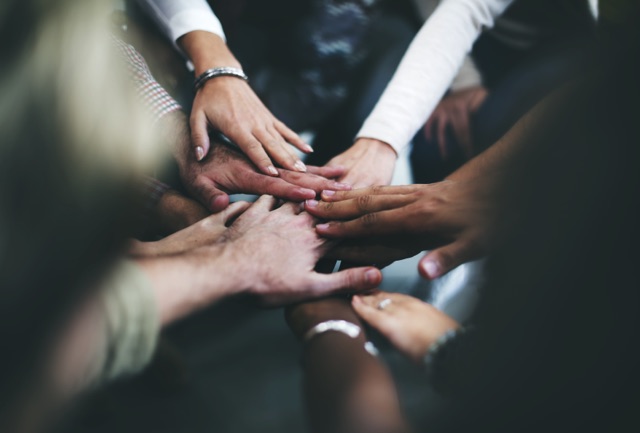Dr. Georgie Koenig
As I packed for my trip to Bali, I thought over the debrief I received from the Intercultural Development Inventory (IDI). I had limited time to delve deeply into the material. Luckily, Dr. Von Behren, my certified IDI coach gave me ideas of what I could do based on my profile. Previously, I had been uncertain of precisely the right thing to do when interacting from with others from different cultures. Now armed with the IDI reports and the insights I gained from my debrief, I was excited to act upon my new ideas.
Intercultural communication has been an Interests of mine for a long time, even before I knew what to call it. It has been a lifelong journey and continues to be on that I am pursuing. My interests in other cultures began with I was four-years-old. A family from Puerto Rico lived next door to us. The nanny, Carmen, only spoke Spanish. The kids knew both Spanish and English. I spent a lot of time over at their house playing. I frequently as questions about Puerto Rico and asked to learn some Spanish. Over the years, my grandmother became very close to the Carmen, and she kept in contact with her even when she went back to Puerto Rico. Carmen’s letters and photos she sent to my grandmother kept my interest in other cultures going.
Across the street from our house lived Kimmie, an immigrant from Vietnam. My grandmother became close friends with her. The exchanged recipes and dieting tips. Through these exchanges, we learned more about Kimmie’s background and her home country. I enjoyed sitting and listening to my grandmother and Kimmie talk. For a small town in Iowa, our block was pretty diverse compared to the rest of the community.
Through the years, I engaged with more individuals from different cultures. My journey continued when I went away for college. As an education major, our class was one of the first to have required multicultural course. As a new teacher, I took my role of creating a learning environment that welcomed everyone. Additionally, I worked to help students grow their understanding of various cultures.
Next, when I Joined the world of employment, my journey not only continued but intensified. As a professional consultant, the district I was assigned to had to work on addressing their over-identification of minority students in special education. Part of being a support person in the district necessitated me to grow my understanding and knowledge of how the situation occurred. I still remember the shock of learning about white privilege. How had I not been aware of this condition? Additionally, beyond identifying with my German Heritage, I didn’t see myself having a culture as a white American. I discovered that I had a lot of learning to do.
Another exposure to cultures different from mine was when I married my first husband. He came from a family with strong cultural identification. His parents were first-generation Americans. The family spoke Italian and Polish in the home. After a visit with the family, the grandmothers made sure we had packages of essential Italian and Polish food.
Still, with my interest and efforts to take advantage of learning opportunities about being culturally aware and sensitive, I felt stuck in my growth. I felt helpless and unsure of how to improve my knowledge and skills in this area.
Then I met Dr. Darlene Von Behren. She spent time telling me about her work and research in the area of intercultural communication. Once I learned about the IDI, I was eager to take it. The report and debrief I had with Darlene were both eye-opening and informative. A few days after the debrief, I left for Bali. I planned on using the information I gained about what I needed to work on while in Bali. My first baby step towards improvement involved me being observant the cultural and becoming comfortable with adapting to some of the cultural norms.
In Bali, I tried out my very limited Indonesian. While there, I asked and learned about the lives of the individuals form Bali that we spent our week and a half with throughout the trip. I learned about community values, religious beliefs, and rituals. There were times that I participated in some of the rituals under the tutelage of a Balinese gentleman. Additionally, I learned about how the housing was set-up, the family structure, and the community. One of the most exciting parts of the trip revolved around the connection between health and food. I gained an appreciation for how the farmers used everything, and nothing went to waste.
Most recently, I dug into my IDI in preparation for a trip to France and Madagascar. I wanted to push myself to stretch and grow in my intercultural communication skills. This time, I chose to work on my lagging indicators. For me, I sought to be aware of cultural differences. One of the things I learned on this trip is even with the preparation ahead of time; it is easier intellectually to read and understand what I need to do compared to my being proficient at the new behaviors.
However, even with the faux pas that I made on my trip, I was at least aware that I made some made gaffes. Previously I would have been oblivious of the impact of my actions. The minor setbacks sharpened my awareness and hardened my resolve to continue to do better. As I mentioned earlier, becoming culturally competent is a journey. Every encounter is a growth opportunity. Thanks to the knowledge I have gained from the IDI and the coaching I received from the certified IDI consultant, I at least have a map to follow now, along with my journey of improvement on the cultural competence continuum.





